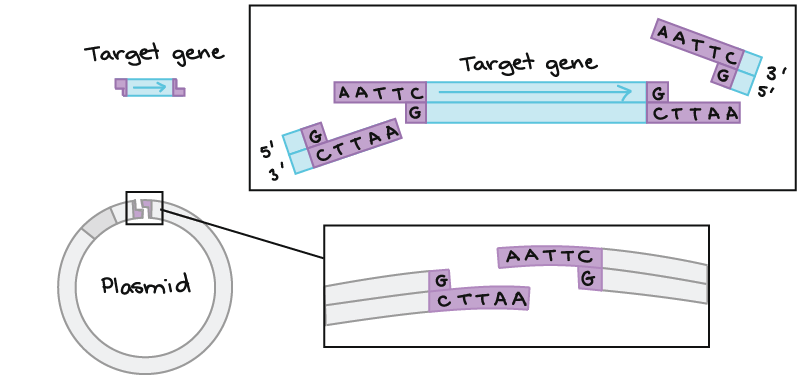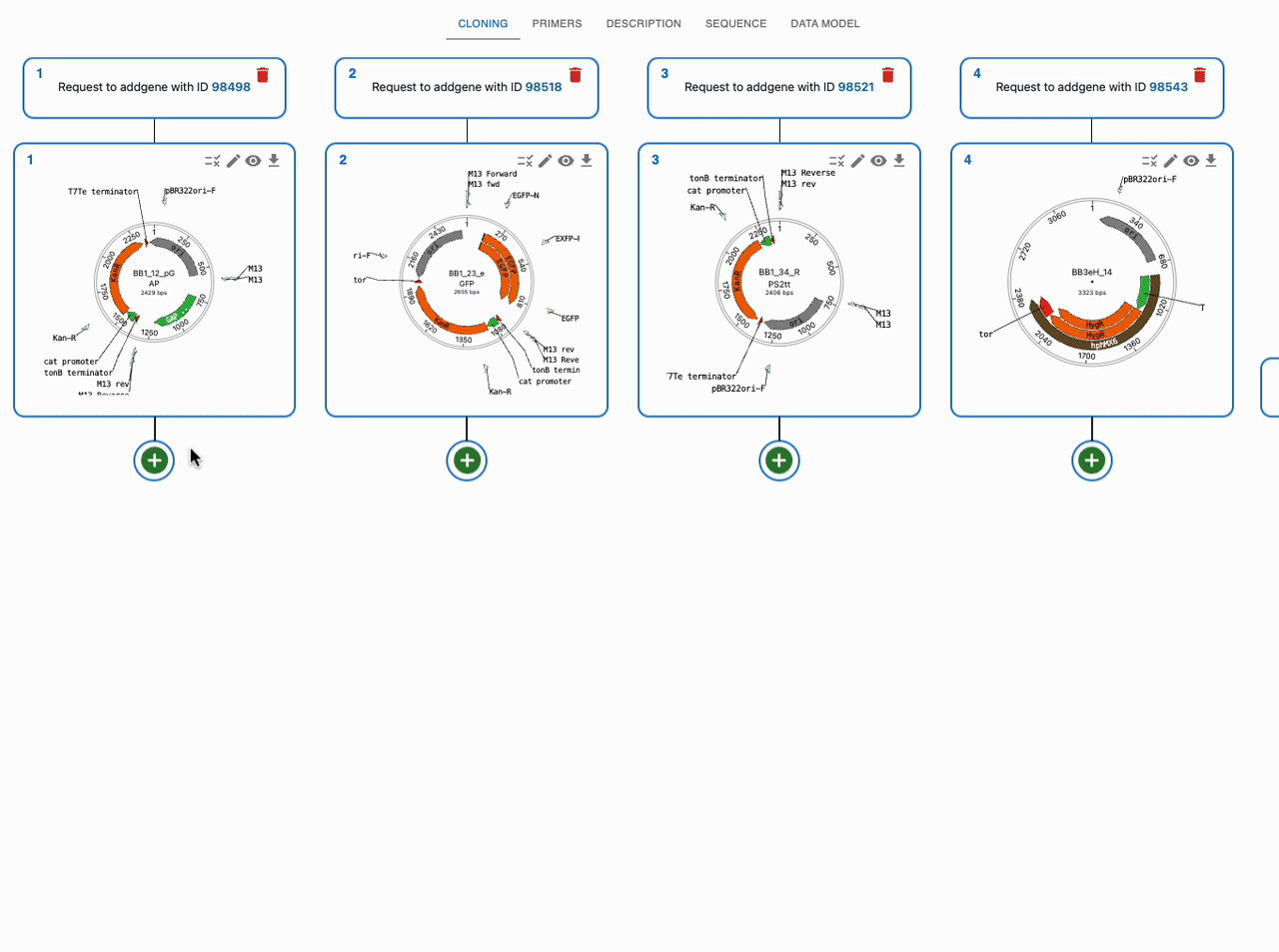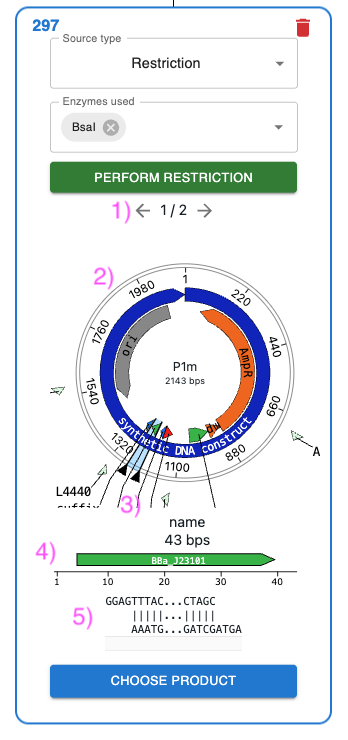Restriction / Ligation¶
What is restriction and ligation cloning?¶
Restriction and ligation cloning is a one of the first cloning methods used in molecular biology. It is a two step process:
- Restriction: The DNA is cut with a restriction enzyme, which is a protein that cuts the DNA at specific sequences, often leaving an overhang or sticky end.
- Ligation: Cut DNA fragments with complementary overhangs come together, and then a ligase joins the nick between the fragments.

Golden Gate Assembly relies on restriction and ligation, read more about it here.
How to plan restriction and ligation in a single step using OpenCloning?¶
Like any other cloning method, click on the plus icon below a sequence in the Cloning tab and select Restriction + ligation / Golden Gate. Then, select the input sequences in the Assembly inputs field, as well as the enzyme you want to use (you can use more than one). If you know that your desired product is a circular plasmid, tick Circular Assemblies only to exclude other possible linear assemblies from the results.

How to separately perform restriction and ligation using OpenCloning?¶
You can separate the restriction and ligation steps into two different reactions. This can be useful if:
- You want to make sure you are picking the right subfragment of DNA for ligation.
- You want to use a restriction fragment for something else. For instance, to transform a cell.
For that, click on the plus icon below a sequence in the Cloning tab and select Restriction. Then, select the input sequences in the Restriction inputs field, as well as the enzyme you want to use (you can use more than one). If there are multiple products from the restriction, you will be shown a selector like below. Select the product you want to use and click Choose product.

- Click on the arrows to select between products
- First sequence viewer shows parent sequence
- The subfragment is highlighted in the parent sequence viewer
- Second sequence viewer shows the subfragment
- The overhangs (if any) are shown below the second sequence viewer
Extra info¶
If you want to design primers with restriction sites, see the primer design page.